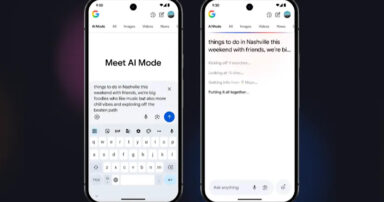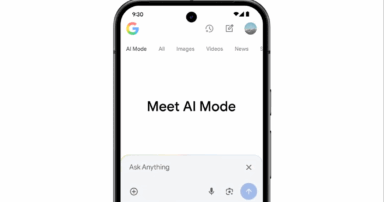Google Unveils AI Mode Development Process
Google has revealed details about the development of its AI Mode, highlighting the user research and design process behind its advanced AI search experience. This new search mode emphasizes a shift from traditional keyword searches to natural language conversations.
User Behavior Drives AI Mode Creation
Google designed AI Mode based on user interaction with AI Overviews. Research revealed users valued these overviews but desired more predictability. Users also began asking longer, more complex questions, exceeding the capabilities of traditional keyword search.
“People saw the value in AI Overviews, but they didn’t know when they’d appear. They wanted them to be more predictable.” - Claudia Smith, UX Research Director at Google
This evolving search behavior prompted Google to reimagine the search experience for the age of AI.
“How do you reimagine a Search gen AI experience? What would that look like?” - Soufi Esmaeilzadeh, Product Management Director
Focusing on Key User Needs
Google's UX research identified key use cases: exploratory advice, how-to guides, and local shopping assistance. This focus allowed the team to tailor AI Mode to user needs.
“Instead of relying on keywords, you can now pose complex questions in plain language, mirroring how you’d naturally express yourself.” - Soufi Esmaeilzadeh
Early feedback suggests users appreciate the organized and easily digestible information provided by AI Mode.
Industry Concerns and Traffic Impact
While Google emphasizes user benefits, industry experts express concerns. John Shehata, founder of NewzDash, reports websites are losing significant traffic due to AI Overviews. He notes traffic drops between 25% and 32% for some sites.
Mordy Oberstein, founder of Unify Brand Marketing, analyzed Google's I/O demonstration and questioned the complexity of the AI showcased. He suggests Google combined readily available information rather than demonstrating advanced reasoning.
Google claims AI search delivers "more qualified clicks" but has not provided supporting data. Current reporting systems don't differentiate between clicks from traditional search, AI Overviews, and AI Mode, making independent verification impossible.
“The original model was Google: ‘Hey, we will show one or two lines from your article, and then we will give you back the traffic. You can monetize it over there.’ This agreement is broken now.” - John Shehata
Implications for SEO and Content
These changes signify a shift for SEO professionals and content marketers. The move toward conversational queries requires content strategies focused on directly answering user questions. Exploratory advice, how-to content, and local information gain importance in AI Mode results.
Shehata recommends focusing on in-depth analysis rather than commodity news. He also emphasizes "visibility, not traffic," as the new key metric.
Looking Ahead
Google acknowledges ongoing development and plans to release more AI Mode features. The interface will likely continue evolving based on user feedback and usage patterns.









